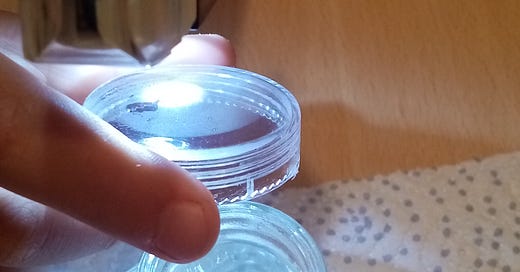The summer is here, the school is over, days are long and hot. Kids are at home, and they need entertainment. This is the perfect time to go over the list of STEM experiments that we have covered so far in our newsletter.
For start, give them instructions on how to document their experiments and STEM projects. You can download our templates and read how to adapt them for different age groups from 3 to 15+ years old kids. We also talked about the importance of safety measures and how kids should be given opportunity to try more challenging experiments if they adopt safety habits.
We talked a lot about the phenomena that happen on the surface of liquids. Once you get into the details of surface tension force, a whole world of simple fun experiments will open to you. But don’t be fooled by simplicity as their explanations can be complex and a matter of active scientific research. So, start with the classic pepper and soap experiments, and try to vary conditions of the experimental setup to see how the surface behaves.
Then move to the beautiful experiment called Marangoni bursting. It is perfect for exploring the dynamics of colored flows and diversity of created shapes by changing the alcohol-water ratio and how much of this mixture is dropped into the oil bath.
A great follow up on the complexity of microfluid flows are experiments with drying droplets. Here you can get wild with exploring the residues of dried droplets of various liquids under different drying conditions. And it is a great excuse to buy your favorite wines and/or distilled beverages.
Let’s get back to simple stuff for a moment. Get a package of skittles and melt them in water to learn how this experiment explains the 1854 cholera outbreak in London.
Now we can move to more dramatic stuff – burning steel. First, do the experiment with steel wool and vinegar, to see how rusting is oxidation, which is a slow low temperature burning. Then move to actual burning of steel in flames. Well, steel wool in flames, but you will explore why it burns in flames, while a chunk of steel does not.
If you are into making dramatic STEM experiments with flames, then exploring how a rocket engine looks from inside is something you should try. Read about the fire in a bottle experiment, but please, be careful! No kidding with safety here. For the best visual effect, do this in the evening, when it gets dark outside (and do it outside, not in your house!).
A fun activity is also exploring the invisible world of UV light (so called “black light”). To be more precise, exploring how some materials glow when illuminated by the UV light (fluorescence). First, you should simply look for objects in and out of the house that fluoresce. Then get some green grass and make an experiment that reveals the red fluorescence of chlorophyll. If you buy a fluorescent dye, then you can let kids create strange glowing “creatures”!
We spent several episodes on the topics of light properties. We started with experiments that help you understand how rainbows are formed. This includes experiments with light passing through glass or water, and then making rainbows with a jar of water and with a prism. You can make a rainbow in your garden, too, which can also help you understand how leprechauns get their money.
Rainbows had led us to explain how our brain tricks us into thinking that we see colors that do not exist. You can make experiments using a computer screen to convince yourself that, for example, yellow color on your screen does not exist.
But to truly understand rainbows, first you must play with experiments showing how waves behave under different conditions. We presented experiments using Slinky, and then two connected Slinkies. A really fun experiment is making sound waves visible using dancing beads of Styrofoam or a laser or a colored water.
This leads to the shocking story of how you were lied to about rainbows. After that you can finally understand why you can see rainbows almost everywhere around you, including on animals like insects and birds. This story includes instructions on how to make a rainbow from condensed water droplets, as an example of the strange phenomenon where any material can create various colors if it is reshaped into special structures on a micrometer scale. Soap bubbles are another example that kids should explore in various ways. A summer without lots of soap bubbles is not complete. And when we say any material, this includes a chocolate, too. This story ends with instructions how to make chocolate shine in rainbow colors.
Some of the experiments mentioned here I showed in a short video. For many more ideas, follow my Twitter profile. For example, my latest story there is on making magnetic fields visible in 3D using baby oil.















Excellent resource that I will be definitely sharing.